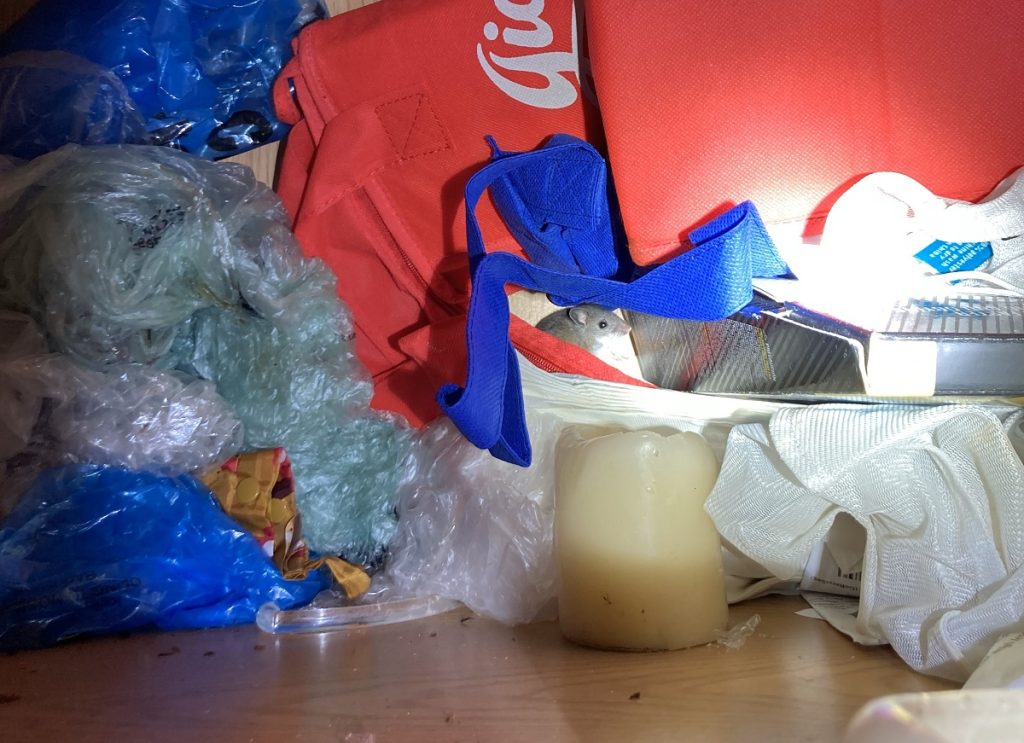Hearing strange noises? Seeing damage in walls or basements? Finding small droppings around the house?
One of the most common and destructive pests, mice can slip through small openings and quickly become a health and safety concern.
Signs of Mice in Central Missouri

A mouse infestation can be tricky to identify because mice prefer to come out at night, but they will leave clear evidence of their activity, such as:
- Droppings: Mice leave behind small, dark pellets wherever they travel, such as along walls, in your pantry, on kitchen counters, and under sinks.
- Scurrying Noises: Scratching and squeaking noises coming from your walls or ceilings at night is a sign that mice are busy with their destructive work.
- Gnaw Marks: Mice have incisors that grow continuously throughout their lives. They gnaw through wood, wires, cardboard, plastic, and even metal at times to not only get to food but also to maintain their teeth.
- Odd Pet Behavior: Cats and dogs will stare at a wall, paw under a refrigerator, or even bark when they sense mice are present.
- Smudge Marks: When mice travel along baseboards or walls, they often leave dark smudge marks of dirt and oil along their path.
- Foul Odor: When the urine of mice begins to accumulate, you might be aware of an ammonia smell.
Problems Mice Cause in Your Home and Business
- Contamination: Mice spread bacteria like Salmonella through droppings and urine on surfaces and food.
- Property Damage: Their constant gnawing damages wires, insulation, drywall, and woodwork.
- Fire Risk: Chewed wires increase the risk of electrical fires.
- Odors and Allergens: Nesting and waste can lead to musty smells and indoor air quality issues.
- Rapid Breeding: A small issue can escalate into a major infestation in weeks.

Mouse Exterminator Near You
Mice reproduce all year long, birthing up to seven or eight times. One mouse can quickly swell to many.
The first step is to control the population, and mouse traps are the most effective method.
The size of the infestation will determine the number of traps, the types of traps, and the bait to use. Infestation size also determines the process’s length, which can range from a few days to weeks. With a large colony, other control measures, including tamper-resistant bait stations, may be required around the perimeter of your structure.
Mouse Exclusions to Keep Mice Out
Without professional exclusion and prevention techniques from Critter Control, you are vulnerable to future rodent infestations.
- Mice can squeeze through gaps the diameter of a pencil
- Mice can gnaw through materials like wood, siding, aluminum, and caulk
If you successfully remove every mouse in your home but do not implement exclusion and prevention techniques, your home is at risk for future rodent activity.
Exclusion Techniques for Mouse Control
We identify and seal all quarter-inch gaps with durable material mice can’t get through.
- Chimney caps that prevent wildlife from nesting or falling inside
- Sealing entry points in roof, soffit, and fascia spaces and intersections
- Plumbing, roof, and bathroom exhaust vent covers to keep animals out
- Repairing and reinforcing holes in house siding
- Installing durable rodent walls around the base of porches and decks
Ongoing Mouse Control Support
Mice are a persistent pest that can try to reenter your home. Their search for food, water, and shelter never stops. Our mouse control support add another layer of protection.
- Bait stations: control the population outside so they can’t get inside
- Reinspection: Make sure mice haven’t created new vulnerabilities
- Habitat Modifications: Suggestions to eliminate shelter on your property
